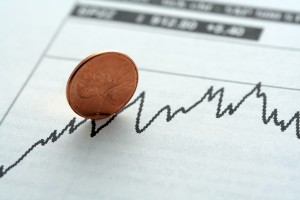 Accounting is the language of business. You must have a basic understanding of it in order to succeed.
Accounting is the language of business. You must have a basic understanding of it in order to succeed.
However, your financial statements can mislead you. To help illustrate this point, let’s think about the Balance Sheet of an airline.
They have a line item for Inventory. It’s a small part of their Total Assets – like 1% to 3%. What makes up their Inventory?
It would mostly consist of supplies – fuel, food, beverages, etc. But it’s not their “real” inventory.
Their “real” inventory isn’t on their Balance Sheet
What is their real inventory? Don’t think like a “pure” accountant or you’ll never discover the answer to that question.
Ask yourself: What do they sell?
Now you know the answer: Airlines sell seats.
Seats are their underlying inventory. Unlike the Inventory on their Balance Sheet, seats are highly significant.
Here’s where it gets interesting…
Picture this – one of their planes is about to take off. They have one open seat on the plane. How much should they charge for that seat?
They need to think about three things in arriving at a price:
1. What’s it worth to a customer?
One customer may have to be on this flight for some reason. Either something unexpectedly came up or they just never got around to booking the flight earlier. In either case, they are likely to pay a premium to get on this flight.
Another customer may be fine waiting for the next flight. They might like to be on the earlier flight but aren’t willing to pay a premium.
The plane is about to take off. Does the airline have time to try to determine which type of customer they’re dealing with?
2. What’s the shelf life?
Seats on a plane are like produce in a grocery store. They’re both perishables. They go bad relatively quickly.
As soon as the plane takes off, the value of every remaining seat is zero. They aren’t worth anything to anybody. So the airline has to act swiftly.
3. What’s their marginal cost?
This final factor helps set the floor on the price. What will it cost to sell one more seat?
The plane may use a little more fuel. The passenger may consume some food and beverages. That’s about it. All they have to do in setting a price is cover this cost.
In other word, almost every dollar they get for this one extra seat goes straight to their bottom line!
What’s your “real” inventory?
Now that you understand the true inventory of airlines, think about your business. Does your true inventory show up on your Balance Sheet?
[George] In my former businesses, we serviced property owners and managers. We worked for both residential and commercial clients. We dispatched technicians to job sites. We sold units of time. It was our primary inventory.
Our commercial business took off when I grasped this concept. We started pricing recurring commercial work based on our marginal cost. We negotiated deals that made our operations more efficient while giving our customers a better price. It was win-win!
The accounting process does a great job at what it was designed to do. However, sometimes you need to get out of the process to discover ways to make your business more profitable.
Does this make you look at your business differently? What is your true inventory? Please share your thoughts in the comments below.

